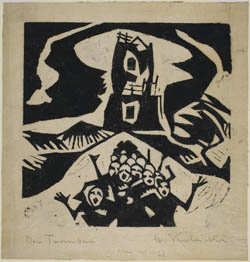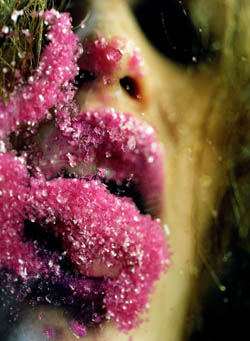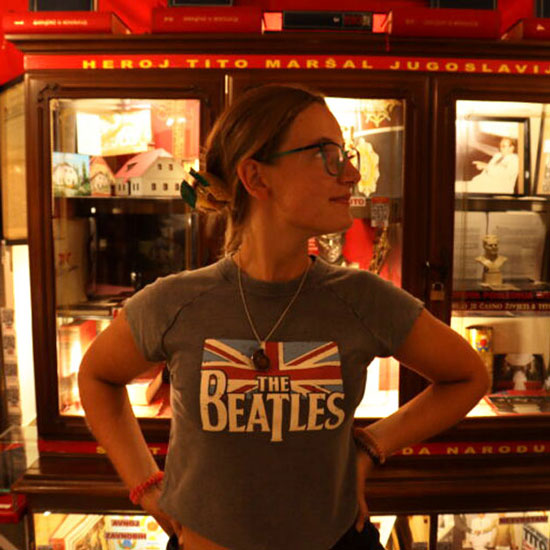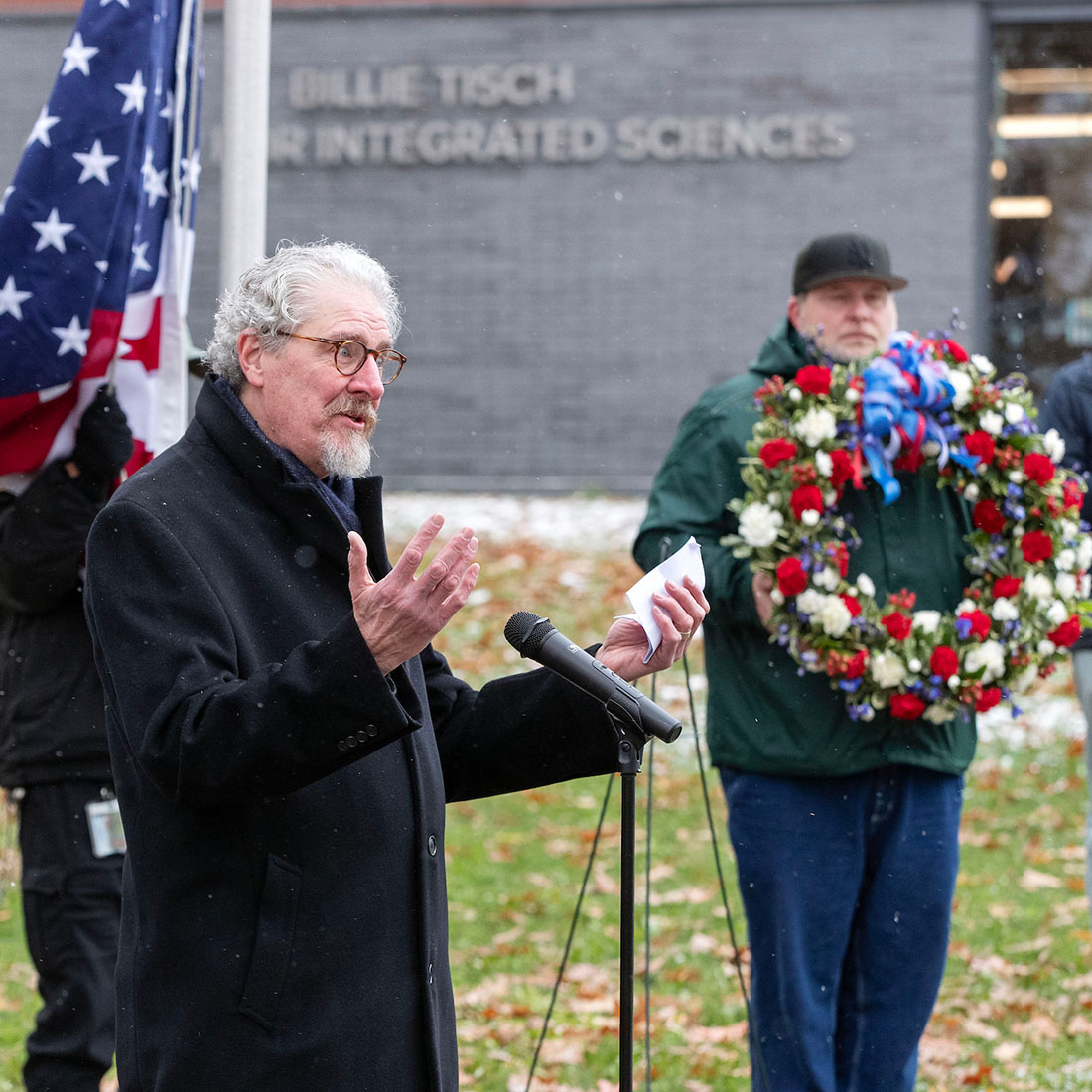Tang summer shows highlight collections and collecting
Three exhibitions at the Tang Teaching Museum and Art Gallery feature works from the Tang's collection as well as that of contemporary art collectors Ann and Mel Schaffer.
Hearing Pictures, which runs through December 30, invites visitors to both look at and "listen to" artwork. "The idea is to imagine auditory worlds in silent images," says Tang Curatorial Assistant Megan Hyde, who organized the show. Arranged to evoke a musical score, the works embody sounds from thunderous blasts to barely audible whispers. Some evoke sound through abstract compositions of line, form, and color that produce the feeling or mood of a sound, while others depict scenes and actions that we know generate sounds—images of rushing water, an explosion, or people playing musical instruments.

Der Turmbau, Stanislaw Kubicki, 1917,
linoleum cut
Visitors will be able to create sounds they "hear" in a particular artwork using a small recording set-up in the gallery, which will play back on the Tang's website. Events over the course of the exhibition will bring a range of regional musicians to perform at the museum, using the artworks as their score. These various recorded responses will become material for a piece in the Tang's Elevator Music series.
Through June 10, the Tang will feature important works of contemporary art in RIOT: Selection from the Ann and Mel Schaffer Collection. Skidmore alumna Ann Schapps Schaffer and her husband, Mel, have been collecting contemporary art for over 40 years. This selection from their extensive collection includes drawings, photographs, and sculpture from such leading artists as John Baldessari, John Chamberlain, Robert Gober, Vik Muniz, and Cindy Sherman.
At the thematic center of the exhibit is Arnold Odermatt's crashed Volkswagen photograph Stansstad (1958). A Swiss traffic policeman, Odermatt photographed hundreds of car wrecks, taking both the official photographs and a second set for himself—eerie, carefully composed images that, in their combination of formal precision and violent imagery, reveal scenes of discomfiting beauty. Expanding on Odermatt's film-noir-like photography, RIOT brings together artworks that taken together form a loose narrative of tension, politics, and social strife.

Chewing Pink, Marilyn Minter,
2008, c-pr
"The Schaffers have collected for many years, and their interest in social tensions and political themes is what draws this collection together—and what makes it very interesting to us as a teaching museum," says the Tang's Dayton Director John Weber, who welcomed the opportunity to bring works from the collection to the museum in conjunction with Ann's 50th Skidmore reunion.
As early supporters of emerging artists, the Schaffers have collected works by a number of artists who subsequently became very well known. Two artists featured in RIOT—Cindy Sherman and John Chamberlain—recently had major retrospectives in New York at the Museum of Modern Art and the Guggenheim, respectively.
Running through the end of July is Twisted Domestic, a student-curated exhibition that investigates our complex relationships with home. Exploring how the home can be a site of charged relationships, some of the works on view address aspects of loss, longing, and disappointment. Others transform common household objects to recapture the quirks and distortions of childhood imagination. Installed on the Tang's mezzanine, Twisted Domestic includes works from the museum's collection by Marek Cecula, Julia Jacquette, Robert Lazzarini, Michael Mode, George Segal, Dean Snyder, George Stoll, and Jil Weinstock. The exhibition is curated by Alexander Unkovic, Class of 2012, the Tang's Eleanor Linder Winter Intern.
The Tang Museum is open noon–5 p.m. Tuesday–Sunday. In July and August, the museum is open until 7 p.m. Fridays. The Tang is closed on Mondays and major holidays. Now in its 12th year, the Tang Museum hosts some 40,000 visitors annually, ranging from local students who visit through programs with area schools to museum-goers from around the globe.
For more information call 518-580-8080 or visit skidmore.edu/tang.


